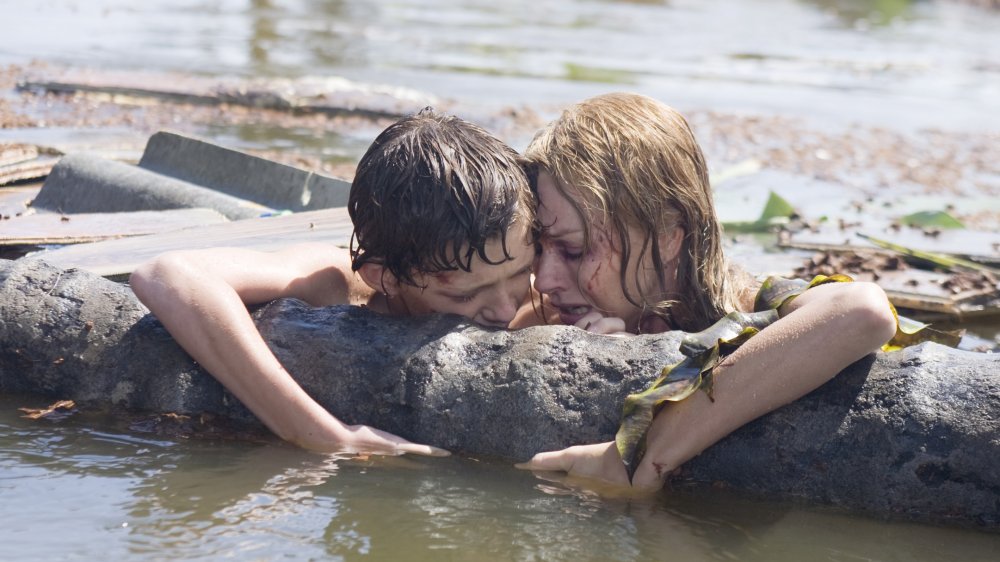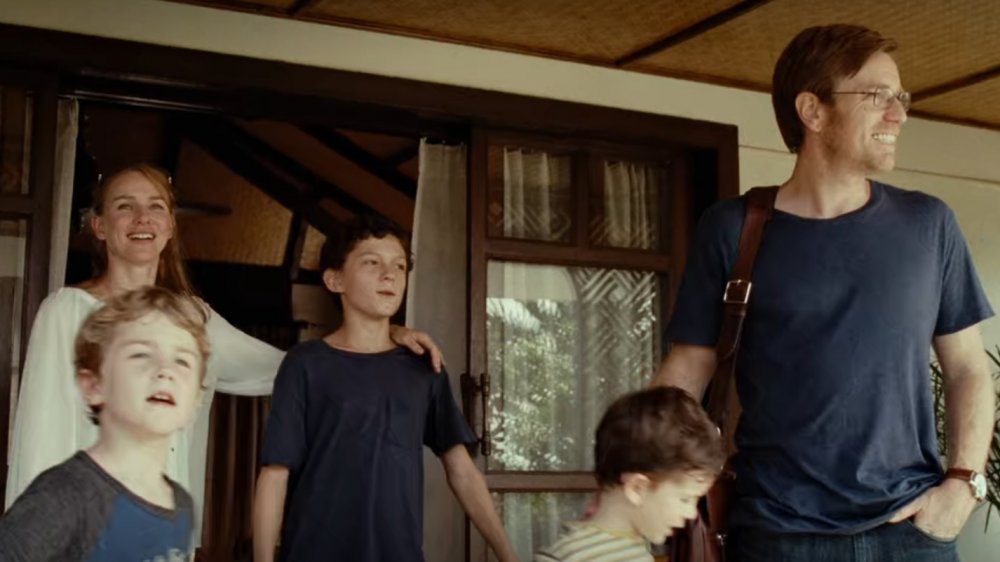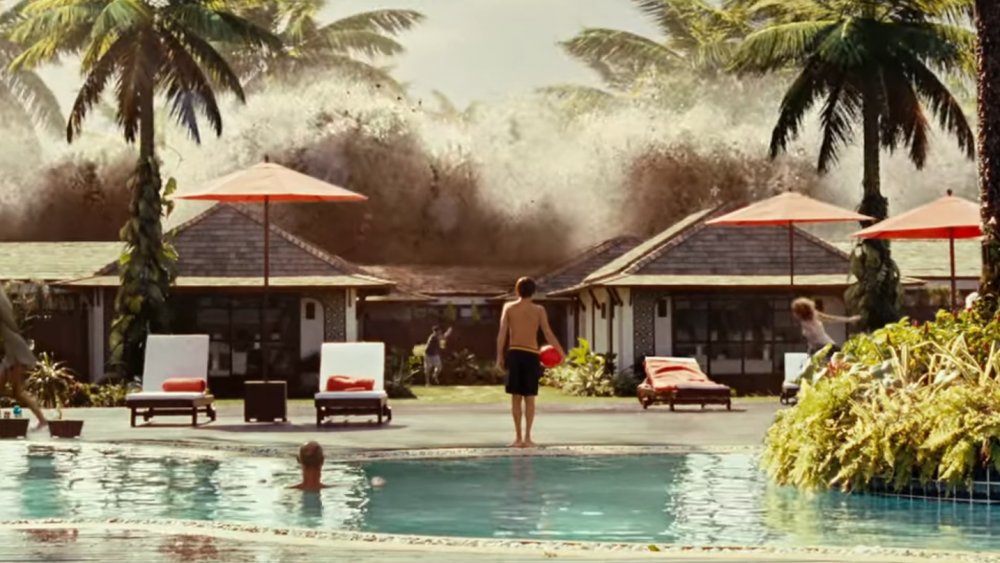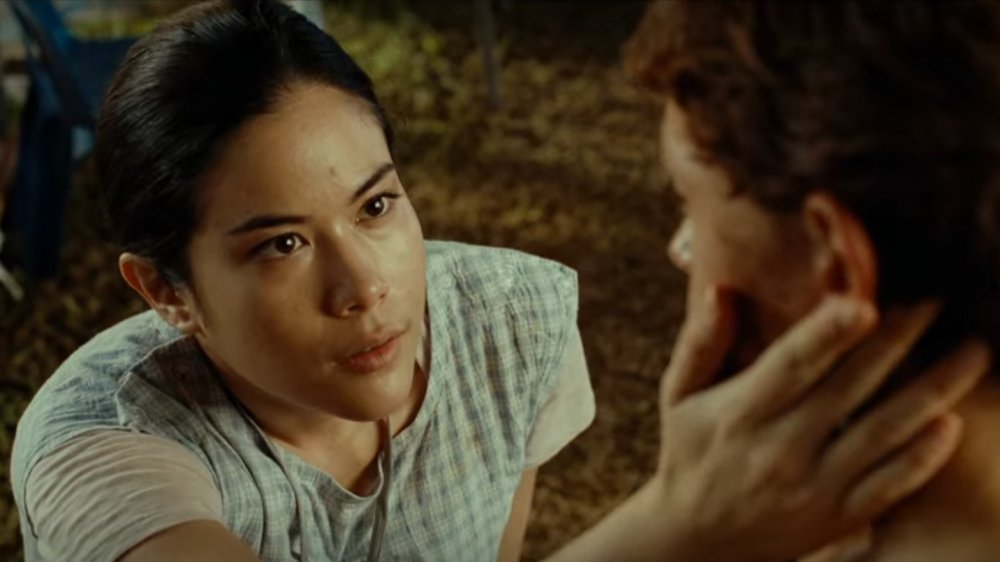Is The Impossible A True Story?
On December 26, 2004, a massive earthquake in the Indian Ocean triggered a tsunami that ravaged the coastlines of Southeast Asia, devastating communities there. The Indian Ocean Tsunami (or the Boxing Day Tsunami) killed around 230,000 people, making it one of the deadliest natural disasters of the last century (via History). The 2012 film The Impossible depicts the events of that day through the eyes of one of the many tourist families whose Christmas vacations turned into a nightmare beyond comprehension.
The Bennetts are a well-off family from the UK on vacation at a resort in Thailand. Just two days into their trip, the Indian Ocean Tsunami rips through their seaside resort, separating Maria (Naomi Watts) and Henry (Ewan McGregor) and their three young sons. Against all odds, Maria manages to find her 13-year old, Lucas (Tom Holland, pre-Spider-Man), in the midst of the carnage. However, just because they've found each other, doesn't mean the horror is over. Even after the waves subside the chaotic aftermath of the calamity keeps the Bennett family fighting for survival.
If you're one of the many Netflix viewers who watched the film recently (it's currently on the streamer's list of the top ten most-watched movies on their platform), then you may be wondering if it's based on a true story, and if so, just how accurate the movie actually is. To answer those questions, we're going to dive into the factual background of this harrowing disaster epic.
The Impossible is based on the experiences of Maria Belon and her family
The personal story at the heart of The Impossible was, in fact, based on the experiences of a real family. There are some differences between the Bennett family of the film and the real-life Belón family, the most notable being that the Bennetts hail from the UK and the Belóns from Spain. However, according to Maria Belón, the inspiration for Watts' character, when it came to depicting what she went through on the day of the tsunami, the movie got things right.
Belón was given a "Story By" credit on the film and helped consult Watts and the filmmakers to make sure, as she described to the BBC, that the movie "took care of the soul of the story."
According to her, they did just that. Belón praised the film in her statements to the BBC, calling special attention to Watts' portrayal, as well as the specific details the movie was able to correctly portray. As an example of how accurate she found the film, she told the BBC that other than a ball she gave her son for Christmas being red in the movie instead of yellow in real life, "The rest is exactly the same."
She wasn't alone in those feelings. Other survivors of the tsunami had similar praise for the movie.
Other survivors of the tsunami have praised the accuracy of The Impossible
When looking at how true to life the story The Impossible is, Belón's endorsement goes a long way. But she's not the only one who attested to the accuracy of how the movie depicted the tsunami and its aftermath. According to other survivors, The Impossible isn't just a true-to-life retelling of one family's story, it also managed to accurately portray the larger events of that terrible day.
One survivor, Simon Jenkins, shared his thoughts on the film with The Guardian. He said that even though it wasn't his exact story that was at the center of the narrative, he still felt that the film had captured his experiences. He said of the accuracy of the movie that "the detail portrayed throughout the entire film was simply mind-blowing, even down to the chairs used in the hospital scenes."
Another survivor, Rick Von Feldt, wrote on his blog dedicated to the catastrophe that the film not only got the specific factual details right, but also the emotional ones. Writing about the film's portrayal of the aftermath of the tsunami itself, Von Feldt said, "The director and writer also accurately depicted the sense of desperation as mothers, fathers, brothers and sisters walked around looking for missing loved ones. Because most people had their personal belongings swept away, they didn't even have pictures."
Some have criticized The Impossible for its choice of perspective
As Belón and other survivors of the tsunami have pointed out, The Impossible is not only based on a true story, it also got the details of that story very right. However, just because the film is an accurate portrayal of the Belón family's experiences, doesn't mean it's a representative look at the events of the Indian Ocean Tsunami.
When the film was released, it was met with criticism for choosing to focus on the plight of a wealthy white vacationing British family in the midst of a natural disaster that disproportionately affected citizens of the countries the disaster actually occurred in. As Laura Helmuth argued in Slate, "[T]his movie is about one of the worst catastrophes of our lifetimes, one that hit only a few Europeans. It's fundamentally misleading to make it about white people."
The film also received criticism for not giving its Thai characters the same narrative attention as its British ones. Writing about the film for The Guardian, David Cox noted, "Those who are protesting don't want to see non-whites patronised with background roles as saintly ciphers; they want them to play mainstream parts as three-dimensional protagonists in what is, after all, their story."
If those criticisms ring true for you, then it may make The Impossible seem less accurate, not because of the details that are included in the story, but because of its narrow perspective of the events. However, as defenders of the movie have pointed out, the film set out to tell one very specific story about that day, and by most accounts, that story was both true and thoughtfully depicted.



